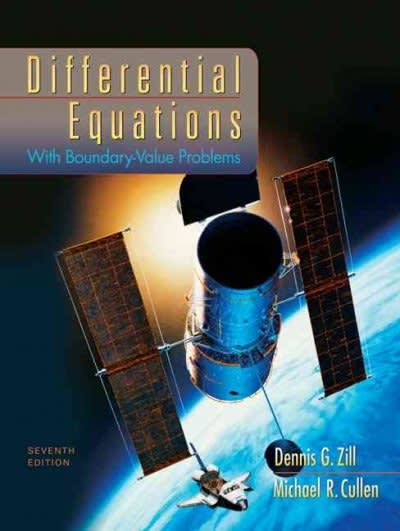


Data is collected on the time between arrivals of consecutive taxis at
a downtown hotel. We collect a data set of size 45 with sample mean x = 5.0 and sample
standard deviation s = 4.0.
(a) Assume the data follows a normal random variable.
(i) Find an 80% confidence interval for the mean of X.
(ii) Find an 80% ?
2
-confidence interval for the variance?
(b) Now make no assumptions about the distribution of of the data. By bootstrapping,
we generate 500 values for the differences ?
? = x
? ? x. The smallest and largest 150 are
written in non-decreasing order on the next page.
Use this data to find an 80% bootstrap confidence interval for .
(c) We suspect that the time between taxis is modeled by an exponential distribution, not
a normal distribution. In this case, are the approaches in the earlier parts justified?
(d) When might method (b) be preferable to method (a)
/1 points | Previous Answers arm-up questions (no points but no penalty): . The "change in thermal energy" of a system is represented as : AEth B. Heat transfer is represented as : Q D C. If heat transfer is into a system, the quantity of heat transfer will be : positive D. If heat transfer is out of a system, the quantity of heat transfer will be : negative due to that heat transfer. E. The "Q" in the first law of thermodynamics represents | the sum of the the heat transfer in The actual problem: A system of gas undergoes the following set of thermodynamic processes; 2.83 x 10 ] of heat transfer into the system. 4.50 x 10" ] of Work as the gas is compressed. 5.87 x 106 J of heat transfer out of the system. What is the change in thermal energy of the system due to these processes? 8250000 X Pay careful attention to the sign convention for heat and work. J2.1 Explain the First and Second Laws of Thermodynamics. 2.2 Define the following with respect to thermodynamics: i. Potential energy ii. Kinetic energy 2.3 Define the following: i. Heat 11. Mechanical work 111. Flow work 2.4 Define the following methods of heat transfer and the mechanics of each: Conduction 11. Convection - .- 111. Radiation 2.5 Define the following as they apply to a thermodynamic system: 1. Sensible heat 11. Saturation point 111. Saturated liquid 1V. Superheated steam (dry steam) V. Saturated steam (wet steam) VI. Desuperheated steam Vi1. Subcooled liquid Vill. Latent heat 1X. State X. PropertyQuestion 2 40 points A heat pump with a motor of 2 kW is used to keep a chicken hatchery at 30C. This latter loses energy at a rate of 0.5 kW per degree difference to the colder ambient. The heat pump has a COP that is 50% of a Carnot heat pump. a- Draw a sketch for the entire system showing all energy transfers. b- Illustrate a heat pump operating between two constant- temperature energy reservoirs showing all energy transfers c- What is the minimum ambient temperature for which the heat pump is sufficient? 2. A system is initially at conditions of P = 200 kPa and V =0.1 m3. Heat is now added to the system. and the system expands in a constant pressure process. At the end of the process the volume has doubled. (a) Calculate the work transferred during the process. (b) During the process the internal energy of the system increases by 200 kJ; kinetic and potential energy remains constant. Determine the net heat transfer during the process













